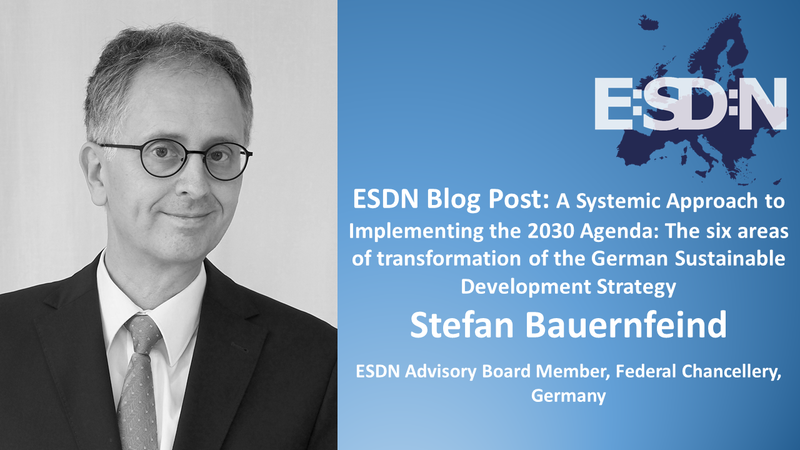November’s Blog post features Stefan Bauernfeind, who is Head of Division Sustainable Development within the German Federal Chancellery, which coordinates the implementation of the 2030 Agenda and the SDGs in Germany. He discusses the need for action within this decade to reach the Sustainable Development Goals by all actors in society. He also discusses how Germany is progressing towards reaching the SDGs.
In the update of the German Sustainable Development Strategy (GSDS) adopted on March 10th this year, a systemic approach to solving the above-mentioned question can be found in the six transformation areas which were defined for the first time (see graph at the end of the Blog). Thereby, the GSDS picked up a suggestion from societal actors from 2019 with reference to the United Nations Global Sustainable Development Report. In addition, in a dialogue process conducted in 2020, the Federal Government was recommended to link the transformation areas of the GSDS to references to those indicators where, according to the current status, the goals will not be achieved, as well as concrete to measures how to get back on track. Both suggestions have also been taken up in the new strategy.
As a result, each transformation area of the GSDS now links those SDGs that pose the greatest challenges in Germany, and emphasizes the interaction of various Goals. It is therefore a matter of focusing on a few areas, without, however, losing sight of the 2030 Agenda in its entirety. The concept of the transformation areas thus paves the way beyond an isolated consideration of individual problems and, at the same time, accentuates the necessary integrated and integrative approach.
To read the full blog, please visit the ESDN website.

